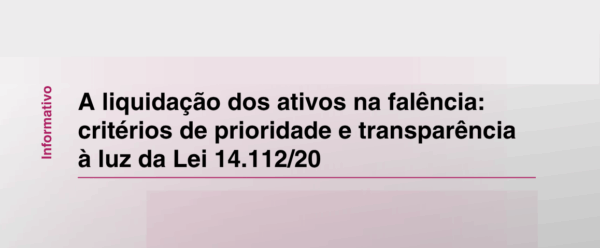CVM Resolution 230 postpones the effective date of the new regulation on takeover bids to October 1, 2025

On June 18, 2025, the Brazilian Securities and Exchange Commission (CVM) approved CVM Resolution 230, which extended the entry into force of CVM Resolutions 215 and 216, initially scheduled for July 1, 2025. CVM Resolution 215 regulates public offerings for the acquisition of shares (OPA) issued by publicly-held companies, replacing the former CVM Resolution 85, while CVM Resolution 216 made adjustments to other rules to align them with CVM 215.
The postponement was motivated by the need to finalize the automatic OPA module of the SRE System, which will allow the receipt and registration of optional OPAs without exchange for securities. Despite the extension, participants may request exemptions or different procedures for the analysis of OPAs, according to article 45 of CVM Resolution 85. This article allows the CVM, in exceptional and duly justified situations, to authorize exemptions or specific procedures, respecting the requirements of Law No. 6,404 of 1976 (Corporation Law).
Employee credit: guidance for employers on payroll deductions

MP 1,292/2025 established the Workers' Credit program, a new line of payroll loans aimed at CLT employees, domestic workers, rural workers and directors not employed with FGTS, contracted entirely digitally through the Digital Work Card application.
The installments cannot exceed 35% of the net remuneration and the worker can use up to 10% of the FGTS balance and 100% of the termination fine as collateral, while the employer must make the discounts via eSocial and collect the amounts via FGTS Digital, under penalty of civil, administrative and criminal liability.
Since March, more than 1.8 million workers have joined the program, moving around R$10 billion in credit.
NR-1 update: psychosocial factors in GRO enter the educational phase from May 2025

Starting May 26, 2025, the inclusion of psychosocial risk factors in Occupational Risk Management (ORM) will become mandatory. Initially, inspections will be for guidance only, without the imposition of fines, allowing companies to adapt to the new requirements. However, starting May 2026, failure to comply with the rules may result in citations and penalties. Mazzucco & Mello is prepared to guide its clients in the correct implementation of the new rules.
Selection of arbitrators, choice of chamber and drafting of the arbitration clause

Effective arbitration requires (i) a precise arbitration clause, (ii) careful selection of the chamber and (iii) appointment of qualified arbitrators. According to art. 13 of Law 9.307/1996, the parties may appoint any independent arbitrator, and it is recommended that the contract impose a minimum level of technical experience. The arbitration chamber defines rules and costs: CAM B3 is focused on corporate governance, CAMARB serves sectors such as infrastructure and CCBC is a reference in international disputes under the New York Convention. The clause must comply with arts. 4.5 of the law, specifying the chamber (and substitute), number and method of appointment of arbitrators, headquarters, language, applicable law, deadlines, confidentiality, emergency arbitrator and matters covered; generic clauses have already been annulled (TJAM). Good examples show that advance technical requirements speed up the award, while omissions generate delays and disputes over jurisdiction. Thus, the combination of a complete clause, an appropriate chamber and specialized arbitrators guarantees validity, efficiency and rapid execution of the arbitration award.
TST recognizes the validity of a collective agreement that waives timekeeping for employees with higher education

The TST recognized as valid a collective agreement clause that exempts employees with degrees from recording their time, based on the understanding of the STF (Theme 1046), which allows the flexibility of labor rights through collective bargaining — as long as it does not involve absolutely unavailable rights.
New Changes to Income Tax, IOF and Compensations
The federal government introduced important changes to the tax regime for investments, financial transactions, and tax compensation through Provisional Measure No. 1,303/2025 and Decree No. 12,499/2025, published in an extra edition of the Official Gazette of the Union on June 11. The new rules directly affect individuals and legal entities, especially in areas such as […]
Liquidation of assets in bankruptcy: priority and transparency criteria in light of Law 14,112/20

The changes introduced by Law 14,112/20 have modernized the bankruptcy process, especially in the liquidation of assets. The expansion of sales methods, with preference for electronic means, makes the procedure more agile and efficient.
The possibility of rapid closure in cases of non-existence of assets also contributes to greater dynamism.
This seeks greater speed and better use of the assets of the bankrupt estate.
Confidentiality, procedural flexibility and effectiveness of the arbitration award

Corporate arbitration guarantees confidentiality (art. 189 IV CPC and art. 22C Law 9,307/1996), procedural flexibility (art. 21) and an irrevocable award, except for nullities under art. 32. The STJ determines that any challenge must be concentrated in a single process (REsp 2,105,872/RJ – 2024).
The treatment of tax debts for companies in judicial recovery

Compliance with legal provisions and regularization of tax liabilities are essential for granting judicial recovery, ensuring the continuity of companies.
Maintenance of the administrator of the company under judicial recovery

Through judicial recovery, companies in economic crisis can restructure their debts and remain in business. For the restructuring to be successful, it is essential to keep their administrators in place. However, the Bankruptcy and Reorganization Law provides for hypotheses for their removal: fraud, failure to comply with the plan, and reckless management. Removal impacts creditors and can even lead to the company's bankruptcy. Therefore, having specialized legal advice is essential to ensure an effective and safe recovery.